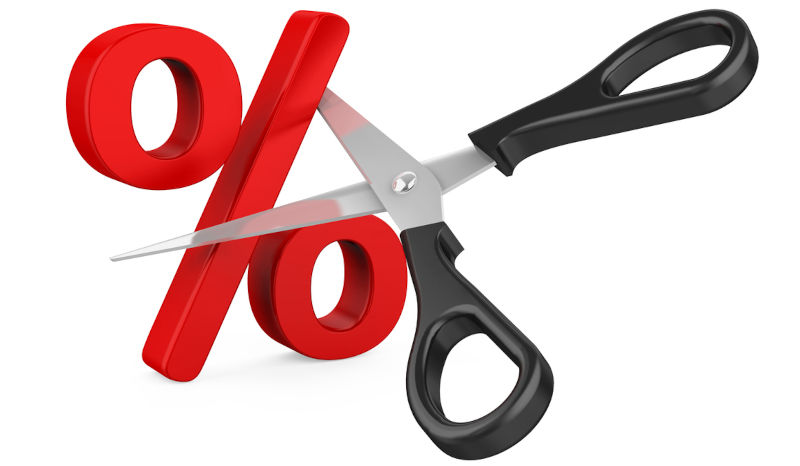Rates cut outlook
January 8, 2024
The recent sharp falls in US, UK, European and Australian inflation rates have convinced analysts that central bank rate rises are over and the next move will be rate cuts in 2024. The US Federal Reserve chairman in the first half of December signalled that too.
But when can we expect such cuts since mortgagors are struggling to meet their debt charges after the most aggressive rate hikes in living memory? And what would it mean for superannuation portfolios most of which are heavily weighted towards shares?
The Fed typically cuts rates within eight months after its first pause. On the 14 June the Fed paused its rate hikes for the first time in 15 months of consecutive rises. That would suggest its first-rate cut should happen by 14 February 2024. But as the chart below shows the wait could take as long as 15 months to 14 September 2024 if history repeats itself.
Another finding is that Fed rate cuts happen on average five months after the last rate rise. On that reasoning the Fed should have cut its rate by the 26 December 2023 assuming its rate rise to 5.25% to 5.50% on 26 July was its last. But that did not happen.
So, speculation now focuses on the first estimate of 14 February. Whether that is realistic comes down to whether core inflation (the Feds favourite measure) reaches the Feds ceiling target of 2.0% by then and looks like staying there. The core inflation rate excludes volatile price items like food and fuel.
US core inflation peaked at 6.6% in September 2022 and fell to 4.0% by November 2023. It will have to halve to persuade the Fed that excess inflation is over, so it is safe to cut rates. A Wall Street Journal survey of top economists on Wall Street found they are forecasting anywhere between three to four rate cuts in 2024 beginning as early as the Feds March meeting.
ING Economics believes the Fed rate cuts in 2024 will be in response to a slowing US economy. The cuts will start in the second quarter and extend well into 2025. ING expects the Fed to cut rates at least six times in 2024, with each cut being 0.25%.
Morningstar expects the Fed to cut interest rates in 0.25% steps six times in 2024, taking its maximum funds rate down from 5.50% now to 4.00%. It then expects another seven 0.25% cuts in 2025, reducing the funds rate to 2.25% by the end of that year. In 2026 it forecasts the maximum funds rate to get as low as 1.75%.
Australias Reserve Bank tends to lag the US Federal Reserve in both raising and cutting its official cash rate which last increased to 4.35% on 8 November 2023. Australias annual core inflation rate of 5.5% to the September quarter 2023 was higher than other developed countries. Hence most economists surveyed by the AFR agree with the RBA that inflation will not come within its ceiling target of 3% until the March quarter of 2025.
On the other hand, if the Fed and other central banks start cutting their cash rates between March and June 2024 it would be a brave RBA to hang off doing so for a year. The Australian government will be anxious to see rate cut relief well before the next federal election which cannot be held later than the 27 September 2025.
According to an article byForbes, the stock market does not perform especially well in the wake of Fed interest rate cuts.That is because rate cuts often happen in response to a recession which hurts corporate earnings.
On this occasion, however, rate cuts might occur because inflation was conquered without needing a recession. Should that happen, it would confirm that the inflation spike in 2022 was a consequence of a collision between a production supply collapse and a government demand stimulus occasioned by the Covid-19 pandemic. Once the emergency was over inflation returned to its previous low range.
The contrary view is that inflation will stay higher than pre-Covid because of deglobalisation, onshoring of supply lines, the end of cheap China, higher government spending and deficits, lower labour productivity in the fast-expanding hospitality and care sectors and reduced immigrant labour. Should that happen then continued high interest rates and tight credit would be necessary to suppress ongoing cost pressures. That would suggest any rate cuts over the next year or two would at least partially reverse as national economies recovered.
Another article byFinancial Samuraisuggests that a small rate cut is generally bullish for the stock market due to lower borrowing rates and the belief that the Federal Reserve will do whats possible to help the economy. As mentioned above most analysts think the Fed will dribble down its funds rate rather than sharply cut it in one swoop. That is because they dont expect a US recession or think that at worst it would be mild.


